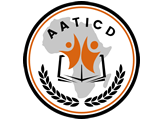Why Attend
IOSH Managing Safely is an ideal course for any individual in a supervisory or management position to understand why and how to manage safety within their organization effectively.
IOSH Managing Safely takes participants through the essential steps of ineffective health and safety management, from identifying and assessing risks and developing control methodologies, to understanding personal and corporate responsibilities.
The course also includes vital information on the importance of incident investigations and how to conduct an investigation, to identify the root causes of incidents to reduce the risk of repeating similar incidents.
IOSH Managing Safety provides critical information on how to set leading and positive performance goals and track success against these to drive positive health and safety culture within organizations.
Course Methodology
The course includes relevant videos and written course material. Delivery of the course involves significant amounts of group discussion and small group work, with participants expected to feedback their assessments to the wider group for discussion.
Course Objectives
By the end of the course, participants will be able to:
- Implement risk assessment methods to identify and rank health and safety risks within their business
- Develop controls to reduce or mitigate these risks to minimize business exposure
- Understand both personal and corporate responsibilities relating to health and safety
- Have an understanding of how to investigate incidents to reduce the likelihood of reoccurrence
- Develop methods of measuring performance against health and safety targets
Target Audience
IOSH Managing Safely is designed for managers and supervisors in any sector, and any organization worldwide. The course provides the knowledge, skills, and tools to tackle the safety and health issues that they’re responsible for.
Importantly, Managing Safely makes a powerful case for safety and health being an integral part of day-to-day management and business.
Target Competencies
- Hazard identification
- Risk assessment and risk ranking
- Health and safety-critical control selection and implementation
- Incident investigation tools
- Performance measurement
Location:
South AfricaTraining Dates:
Each course starts every Monday of each week. Please book your training on a date that is a Monday.Course Duration:
Unit Standard:
NQF Level:
Number of Credits:
Course Fees
Note: Please fill in the online application form on the left or bottom if this page to receive a quotation with detailed pricing from AATICD.How to Apply:
To Apply Simply Fill in the Online Enquiries / Applications form on the Right Sidebar or Bottom of this website https://www.aaticd.co.zaNB:
When filling the online application form; please take note of your desired Training Month, Duration in Weeks and Training Session. This will give us the exact dates you will be attending your classes.Also note that Tuition Fees must be paid upfront on or before training start date. This is to ensure that all resources are made availabe for you before you start. You will not be allowed into training if fees are not paid and verified.
Also note that Tuition Fees Cancellations must be made 14 business working days before the starting date of training. This will allow us to do a 50% refund of the total amount paid. If cancellations are made thereafter note that no refund will be made to delegates.
Tuition Fees include teas and lunch as well as either a laptop or tablet which a delegate will take home free of charge.
Tuition Fee DOES NOT include Accommodation, Dinners and other Extra Curricular Activities or Incidentals. Delegates are expected to fund this on their own. AATICD will not be held accountable for any incidents to delegates.
In-House Trainings are also available for 3 or more delegates for any duration. Please consult with our Administration for such In-House training bookings.
Course Outline
- Introducing Managing Safely
- Why is it important to manage safely?
- What is your role in influencing managing safely?
- Assessing risks
- What is the risk?
- Hazard and hazardous events
- What is a risk assessment?
- How are risk assessments carried out
- Identifying hazards
- Assessing risk – risk matrix
- Recording and communicating findings
- Dynamic risk assessments
- Controlling risks
- How to reduce risk
- Reduction of likelihood
- Reduction of severity
- How do you decide which control to use?
- Hierarchy of risk control
- Human behavior factors
- Benefits of risk reduction vs time, cost and effort
- Putting risk control into practice
- Understanding responsibilities
- What does the law require you to do?
- Duty holder responsibilities
- How does the law work?
- Reasonably foreseeable risks
- Reasonably practicable controls
- Civil law vs criminal law
- UAE and International Legal Frameworks
- Key parts of a health and safety management system
- Understanding hazards
- Common hazards within the workplace
- Mechanical hazards
- Physical hazards
- Chemical hazards
- Biological hazards
- Environmental hazards
- Organizational hazards
- What can you do to reduce or mitigate these hazards?
- Investigating incidents
- Why to investigate incidents?
- Importance of near-miss reporting and investigation
- How do incidents happen?
- Causal tree
- Immediate causes
- Underlying causes
- Root causes
- How do you carry out an investigation?
- Measuring performance
- What’s performance measurement about?
- How do you measure health and safety performance?
- Indicators, reactive and proactive
- Proactive measures
- Reactive measures
- Standard reporting figures
- Safety pyramid
- What is auditing?




